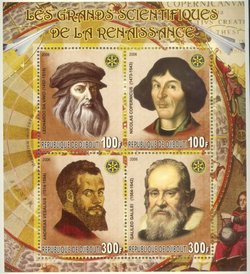|
There are many in the world that are fascinated by the life and works of Andreas Vesalius (1514 -1564). This has created a market for “Vesaliana”. These are books, art, medals, and works are related to Vesalius. As an example, an original 1543 Fabrica sells today for 400 thousand dollars! Even the “New Fabrica” by Drs. Garrison and Hast has cuadrupled its value in only two years since its publication!
Some of the most coveted items are stamps that celebrate the illustrious anatomist. Probably the most detailed research on the topic was made by Prof. Omer Steeno and Dr. Maurits Biersbrouck, both contributors to this website. Their research is constantly updated and the latest iteration of their work is “Andreas Vesalius in Philately” published in WordPress.com.
In a recent private communication Prof. Steeno regretted that unscrupulous individuals have taken to forge and falsify stamps. A clear case of this is the stamp collection “Les Grands Scientifiques de la Rennaissance” published in November 23, 2006 by the Republic of Djibouti. The stamps (shown in the accompanying image) depict Leonardo da Vinci, Nicolas Copernicus, Galileo Galilei, and Andreas Vesalius. As a Vesaliana collector, who would not want this set of stamps placing Vesalius in such company?
|
Click on the image for a larger depiction
|
| Djibouti is an African country that gained its independence from France in 2007 and is located in the horn of East Africa and the opening of the Red Sea into the Gulf of Aden.
Drs. Steeno and Beisbrocuk contacted the Djibouti postal service and were able to confirm in February, 2016 that indeed these stamps are false and collectors should be aware.
Sources:
1. “Andreas Veslius in Plhilately” Steeno, O; Biesbrouck, M 2016
2. Private communication. Steeno, O. 2016
3. “On the falsification of a Vesalius Stamp wrongfully ascribed to the postal service of Djibouti” Steeno, O; Biesbrouck, M 2016. EMediTheme 2016 Editor: Menzies, S.
|



